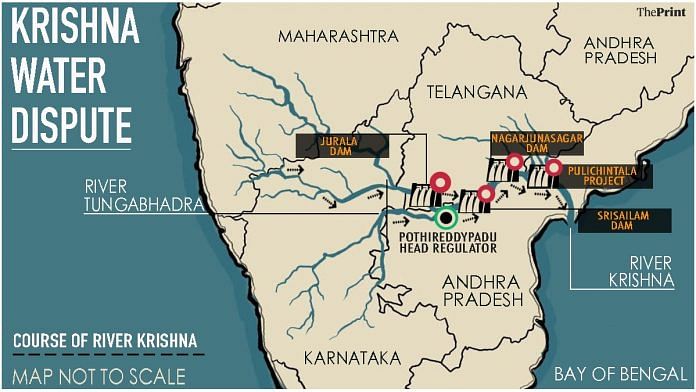Hyderabad: Who gets how much of the Krishna river’s waters? And how must the water be used?
This fight has raged between the two sister states of Andhra Pradesh and Telangana ever since their bifurcation in 2014, when an ad hoc decision was made to divide the water 66:34 in favour of the former.
While Telangana has since escalated its demand to a 50:50 share, both states are trying to cancel out each other’s projects along the river. The two have complained that the other is depriving them of their rightful share of the water.
The feud appears to have taken down the “friendship” between the two chief ministers, Y.S. Jagan Mohan Reddy and K. Chandrashekar Rao (popularly known as KCR).
The matter has now reached the Supreme Court with the Andhra government filing a writ petition Wednesday seeking its “due share” of the river water. It has also complained about Telangana’s “actions” on its side of the river.
Andhra’s petition requests the Union government to notify the jurisdiction of the Krishna River Management Board (KRMB) under Section 87 of the Andhra Pradesh Reorganisation Act, 2014, and thus clearly outline its oversight over the use of the river’s waters.
The temperature has shot up so much that both states deployed police on their respective sides at the Nagarjuna Sagar and Srisailam dams in the first week of July.
Also Read: The Rs 9,000-cr Cauvery reservoir project Karnataka & TN have clashed over for decades
How is the water shared between the two states?
The 1,400-km Krishna river flows east, from Mahabaleshwar in Maharashtra to the Bay of Bengal. It passes through Maharashtra, Karnataka, Telangana and Andhra Pradesh, forming a part of the border between the latter two.
To streamline water-sharing between the states, the Krishna Water Disputes Tribunal (KWDT) was set up in 1969, in keeping with the Inter-State River Dispute Act, 1956.
In 1976, the states entered into an agreement to divide the estimated 2,060 thousand million cubic feet (tmc ft) of Krishna water into three parts — 560 tmc feet for Maharashtra, 700 for Karnataka, and roughly 800 for erstwhile Andhra Pradesh.
The agreement was signed on two schemes — the first was to share available water based on 75 per cent dependability, while the other recommended ways to share the surplus water.
At the time of Andhra’s bifurcation in 2014, the water resources ministry extended the duration of the KWDT. Andhra Pradesh has asked that Telangana be included as a separate party at the KWDT. It has demanded allocation of the river water to be reworked among four states, instead of the existing three.
In 2014, the two Telugu states agreed to split the water on a temporary or ad hoc basis in a 66:34 ratio. Of the total 811 tmc feet allotted to the combined state, Telangana would receive about 299 tmc feet of water, while residual Andhra Pradesh would get 512 tmc feet.
Both states have projects constructed on either side of the river, on the common reservoirs.
All projects on the Krishna — Jurala, Nagarjuna Sagar, Pulichintala and Srisailam — were built when the states were one.
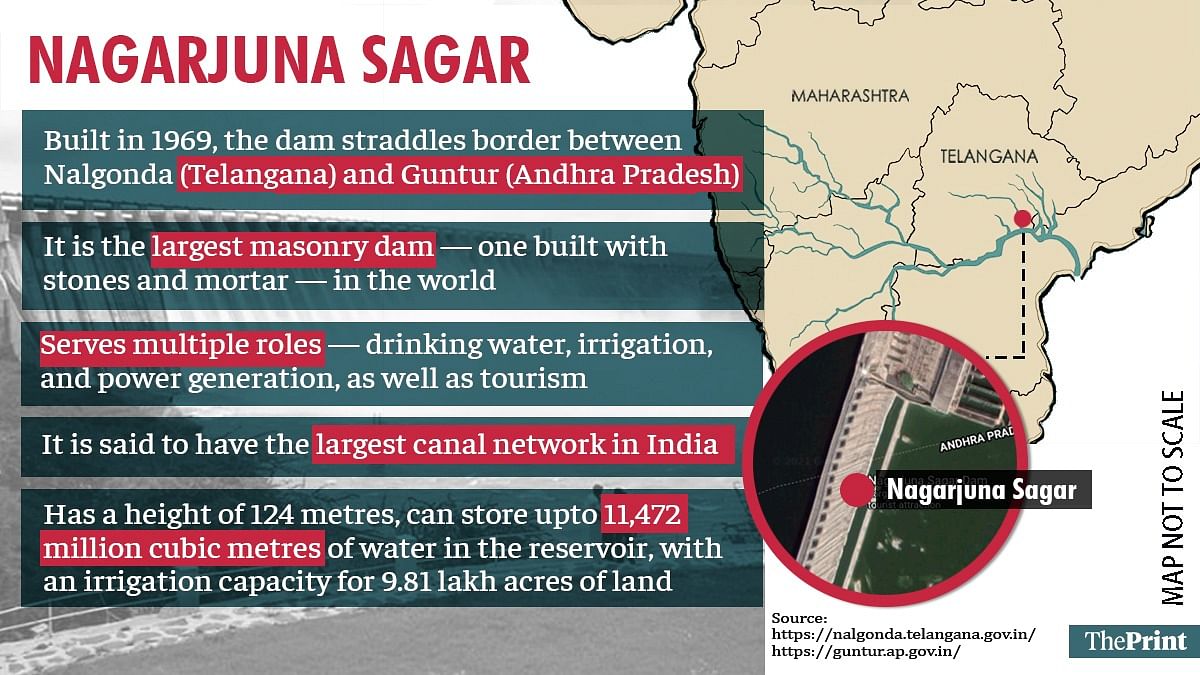
Down the Srisailam reservoir is the Pothireddypadu head regulator from which Rayalaseema in Andhra Pradesh gets water.
Former chief minister Y. S. Rajasekhara Reddy (popularly known as YSR) had expanded the discharge capacity to 44,000 cusecs from 11,500 cusecs, thereby drawing 4 tmc feet of water from the Srisailam backwaters, which continued even after bifurcation.
The maintenance of the Srisailam and Pulichintala projects, and the Prakasam barrage, are under Andhra, according to the Andhra government, while Telangana claims to look after the Nagarjuna Sagar and Jurala projects.
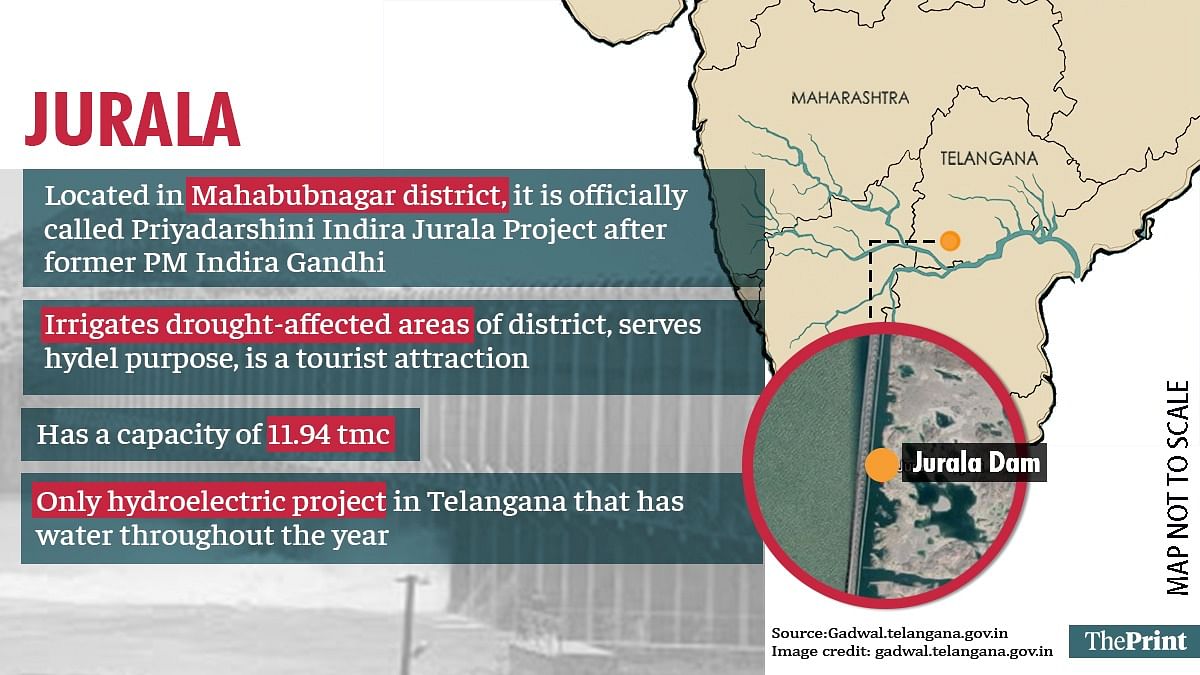
During bifurcation, the central government constituted an ‘apex council’ to supervise the functioning of the Godavari River Management Board and the Krishna River Management Board.
The council consists of the Union Minister of Water Resources and chief ministers of respective states.
Why have matters come to a head?
The water of the Srisailam reservoir — which is the main storage for river water between the two states — has turned out to be a major warring point.
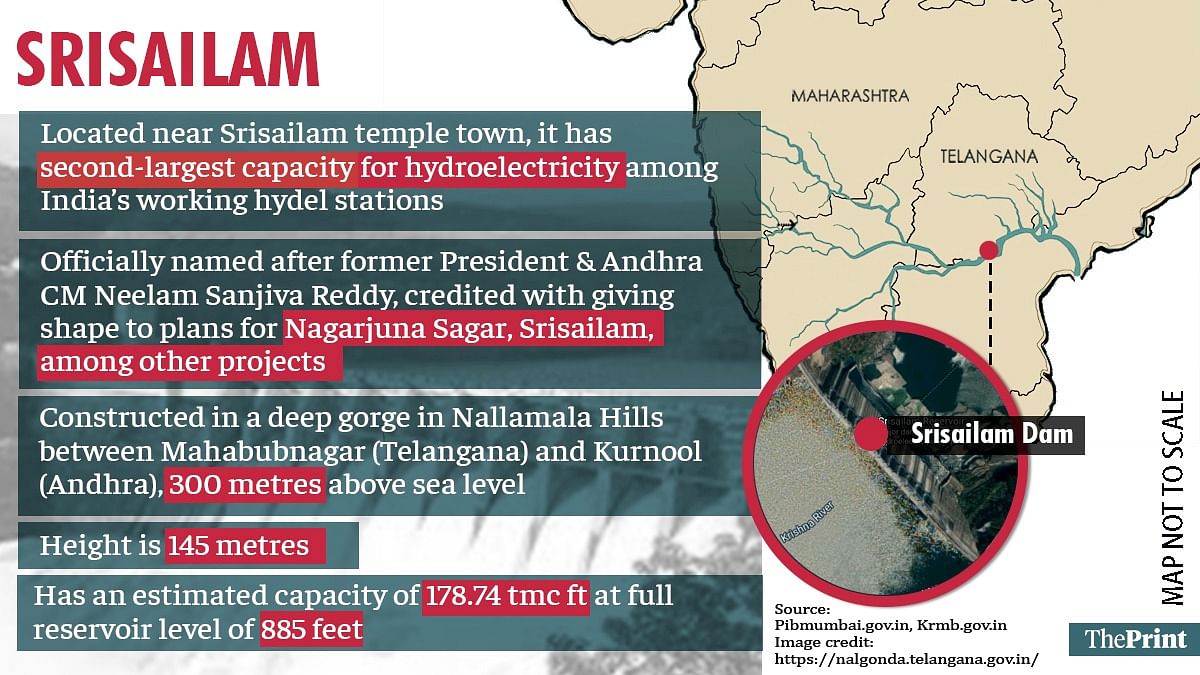
Andhra Pradesh Chief Minister Jagan Reddy wrote to Prime Minister Narendra Modi last week, protesting against Telangana’s use of the Srisailam reservoir water from 1 June for power generation.
He complained that the rival state was generating power below 834 feet, which is the Minimum Draw Down Level (MDDL) for producing electricity.
He said Telangana had not taken the approval of the Krishna River Management Board (KRMB) before going ahead with its plans.
This autonomous body under the central government’s purview was set up when the states split. The board’s aim was to regulate the Krishna basin water supply to projects in both states.
Reddy is angry that Telangana’s hydel project is allegedly not allowing water levels to rise in the Srisailam reservoir.
For Andhra Pradesh to give water to the Rayalaseema region — Reddy’s political bastion — the water level here needs to be around 881 feet.
Although most chief ministers of Andhra Pradesh — including pre-bifurcation — have been from Rayalaseema, the region has remained relatively underdeveloped and underwatered.
The chief minister said in his letter: “Because of this adamant attitude of Telangana, water level reaching even 854 feet seems to be a herculean task and this level is essential for drawing at least 6,000 cusecs of water… this will cause severe distress to the chronically drought-hit districts of Rayalaseema… SPSR, Nellore, Prakasam and also Chennai city…”
Under the Telugu Ganga Project, water from Srisailam reservoir is also sent to Chennai city.
Andhra also believes water used for hydel projects is ultimately wasted as it flows into the Bay of Bengal.
But Telangana has said it will never stop generating power, adding that the KRMB has no right to object because there were no agreements between the states on hydel power generation.
The Telangana government said it needed the hydel energy to power its Nettempadu, Bheema, Koilsagar and Kalwakurthy lift irrigation projects.
The fight continues…
Andhra Pradesh has alleged that Telangana is drawing water from the four projects — Jurala, Srisailam, Nagarjuna Sagar, and Pulichintala — for hydropower generation without the approval of the KRMB.
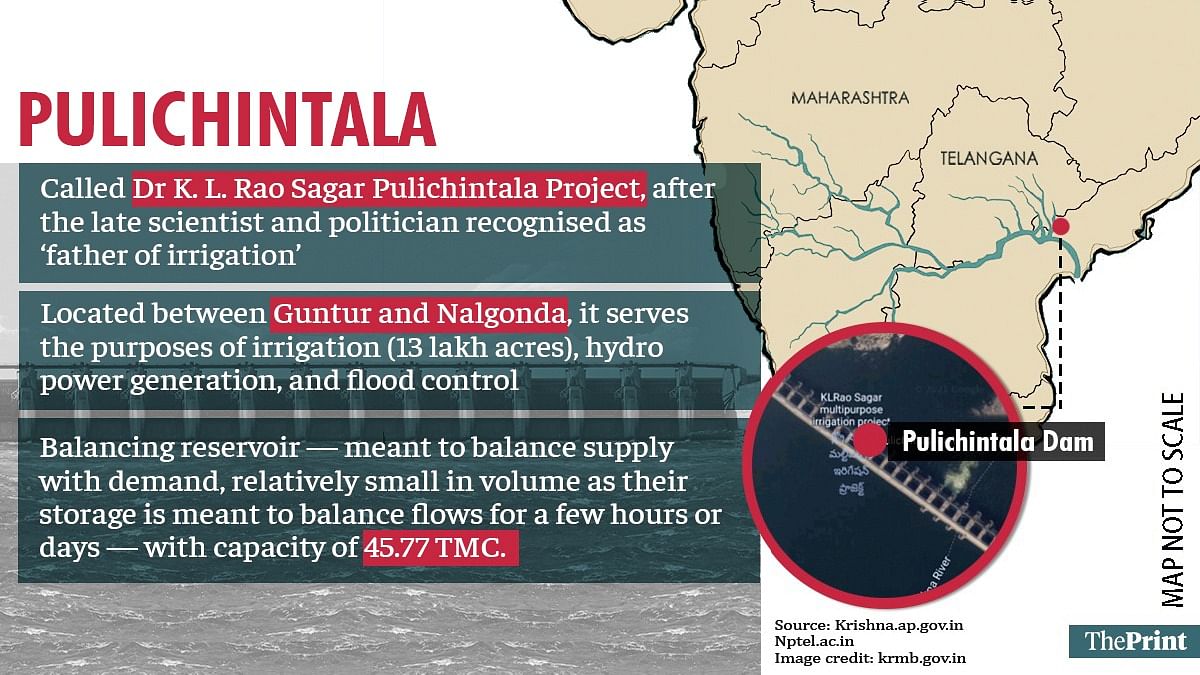
Meanwhile, Telangana objects to the Andhra government’s administrative sanction of the Rayalaseema Lift Irrigation Scheme (RLS) — a new project to meet the water and irrigation requirements of people in the dry Rayalaseema region.
The RLS will lift three thousand million cubic feet (tmc feet) of water daily from the Srisailam reservoir, to be carried through the Srisailam Right Main Canal.
As part of the project, the canal will be widened to transport 88,000 cusecs, double its present capacity of 44,000 cusecs. The cost would be Rs 6,289 crore.
Telangana dubs RLS illegal, fearing that Andhra will take away a large share of the water if it were to widen the canal. But Andhra is adamant, saying it will not use more than what was allocated to it by the Krishna Water Dispute Tribunal.
The Telangana government is taking the fight forward. It has now conceived half a dozen new irrigation projects as an “inevitable consequence to Andhra’s RLS project execution”. One of them is a barrage near Alampur, which is before the Srisailam project.
Telangana has also demanded a 50:50 share of the Krishna waters.
Is the Krishna dispute new? The political play
The Krishna water discord between states is decades old. The erstwhile Hyderabad and Mysore states fought over it, and the animosity continued between Maharashtra, Karnataka and united Andhra Pradesh.
In 2015, the Andhra and Telangana police forces clashed at Nagarjuna Sagar dam after Andhra demanded the release of 6,000 cusecs of water, citing a government order. The Telangana authorities refused to do so, stating they would need orders from their own government.
The Jagan government’s decision to call tenders for RLS has riled Telangana. Other leaders, too, have jumped into the war or words, even criticising the late chief minister YSR, Jagan’s father.
Analysts say the timing of KCR’s fierce reaction — a year after the RLS was announced — has a lot to do with the “political game” back in the state.
M. Kodandaram, an activist-turned politician who was at the forefront of the Telangana agitation and is now a leader of the regional political party Telangana Jana Samithi, said: “The water issue is not new. The two chief ministers, once dear friends, had met each other several times. Why did they not discuss this then? Telangana’s political atmosphere has changed — with dissent and some opposition — it looks like KCR is trying to get back control. And if such water disputes are raked up, the sentiment of Andhra/Telangana will again take centre stage.”
Telangana is gearing up for a bypoll in Huzurabad — which has been vacant since Eatala Rajender, a former state minister of KCR’s Telangana Rashtra Samithi, joined the Bharatiya Janata Party this year.
Senior political analyst Purushottam Reddy said KCR was trying to wring the issue for political mileage — to suppress growing dissent in the state’s south which lacks major projects.
Rayalaseema, meanwhile, is the most important vote bank and personal bastion of Jagan Mohan Reddy.
Compromising on their interests or not reciprocating in an equally aggressive tone would have ramifications back home, he said.
Also Read: Indian states have fought over shared rivers for long. Modi must make them cooperate now


